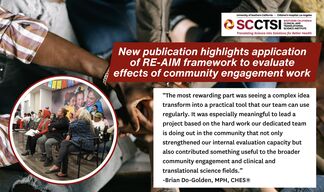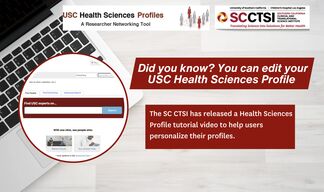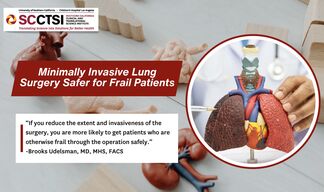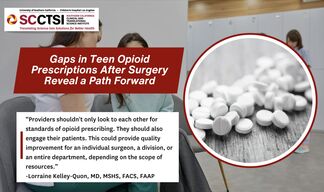Hollywood and Health Researchers Team Up to Boost Minority Participation in Clinical Research
The SC CTSI launches initiative with television writers to advance a shared goal: conveying the importance of participation in clinical research by people of all backgrounds.
Minorities make up about 30 percent of the U.S. population and 70% of the population of Los Angeles County, but only 17 percent of participants in clinical research. In fact, clinical research has long been disproportionately white, a pattern that has contributed to significantly poorer health outcomes for tens of millions of people of color.
While research centers and the federal government have worked to boost minority participation in clinical research for decades, the problem is far from resolved. The SC CTSI is working with a new partner, Hollywood Health and Society to help the public understand the importance of clinical research for all communities through a powerful medium: television.
Hollywood, Health & Society (HH&S) is an organization within the Norman Lear Center of USC’s Annenberg School for Communication. HH&S has a mission to provide the entertainment industry with expert information on health, safety and security. SC CTSI recently partnered with HH&S to address minority representation in research in a panel discussion, "Clinical Trials So White: When Life-Saving Research Leaves People of Color Behind."
The panel brought together researchers from USC, CHLA and the Center for Disease Control, together with television producers from the popular series Grey's Anatomy and Black-ish. The event's key goals: to help open the lines of communication between researchers and television writers, to give the writers the background they need to write compelling and accurate stories about health and research—and perhaps dispel a few harmful myths along the way.
Scientists and storytellers working together
Of course, health and medical stories are a television staple. And as one of the world's most powerful communication mediums, television has a nearly unmatched ability to change both minds and behavior, pointed out panelist Thomas Buchanan, MD, Director of the Southern California Clinical and Translational Science Institute.
"We need all of you to help our communities understand the value of research participation," said Buchanan. "We don't have anywhere near the reach that you do."
Event speakers spotlighted how low participation in research by members of the nation's African American and Latino communities, among others, further impedes the already-slow pace of research into such pressing health issues as diabetes, heart disease, obesity, and stroke.

Replacing mistrust with understanding
In the Latino community, for example, there's a distrust and fear of the medical establishment, pointed out panelist Amy Tofighi, MD, associate professor of neurology at Keck School of Medicine of USC, who has studied disparities in incidence of stroke and TIA along ethnic and socio-economic lines. Such distrust, she said—particularly among undocumented patients who may fear discovery and deportation—contributes to delays in seeing doctors and receiving crucial medical care, not to mention the decreased likelihood of participation in research.
Television writers are eager to address these health problems and disparities, said panelist Zoanne Clack, executive producer of the long-running ABC medical drama "Grey's Anatomy." Clack is well-prepared to understand the importance of clinical research: she came to a career in television with MD and MPH degrees.
To produce the best possible medical stories, Clack said, Hollywood's television writers need to be able to reach out to professional researchers at places like USC and CHLA, both for the science as well as the drama: "We want the details that help us tell the story."
The entertainment industry has demonstrated its ability to advance vital health issues, noted panelist Fleetwood Loustalot, PhD, lead for the CDC's Epidemiology, Surveillance and Health Services Team in the Division for Heart Disease and Stroke Prevention (DHDSP). He cited television's role in helping to de-normalize smoking, for example. Unfortunately, he added, healthier behaviors, such as avoiding tobacco or exercising more, have been comparatively slow to spread through some socially and economically disadvantaged groups in the U.S., indicating the continuing need to improve the reach of health information.
The difficulty of recruiting research participants from the public is hardly restricted to minority populations, said Michele Kipke, PhD, Co-Director of SC CTSI and Vice Chair of Research at CHLA, who gave opening remarks at the event. Mistrust and fear of doctors and research is common. Additionally, many qualified potential participants don't want to invest time and effort potentially required for a research study—especially if they are ill, tired and worried.
Hollywood, Health & Society wants both television writers and clinical researchers to see their organization as a liaison, said Kate Folb, the group's director: "Scientists and storytellers speak very different languages, so we need researchers who are willing to talk about the science."



